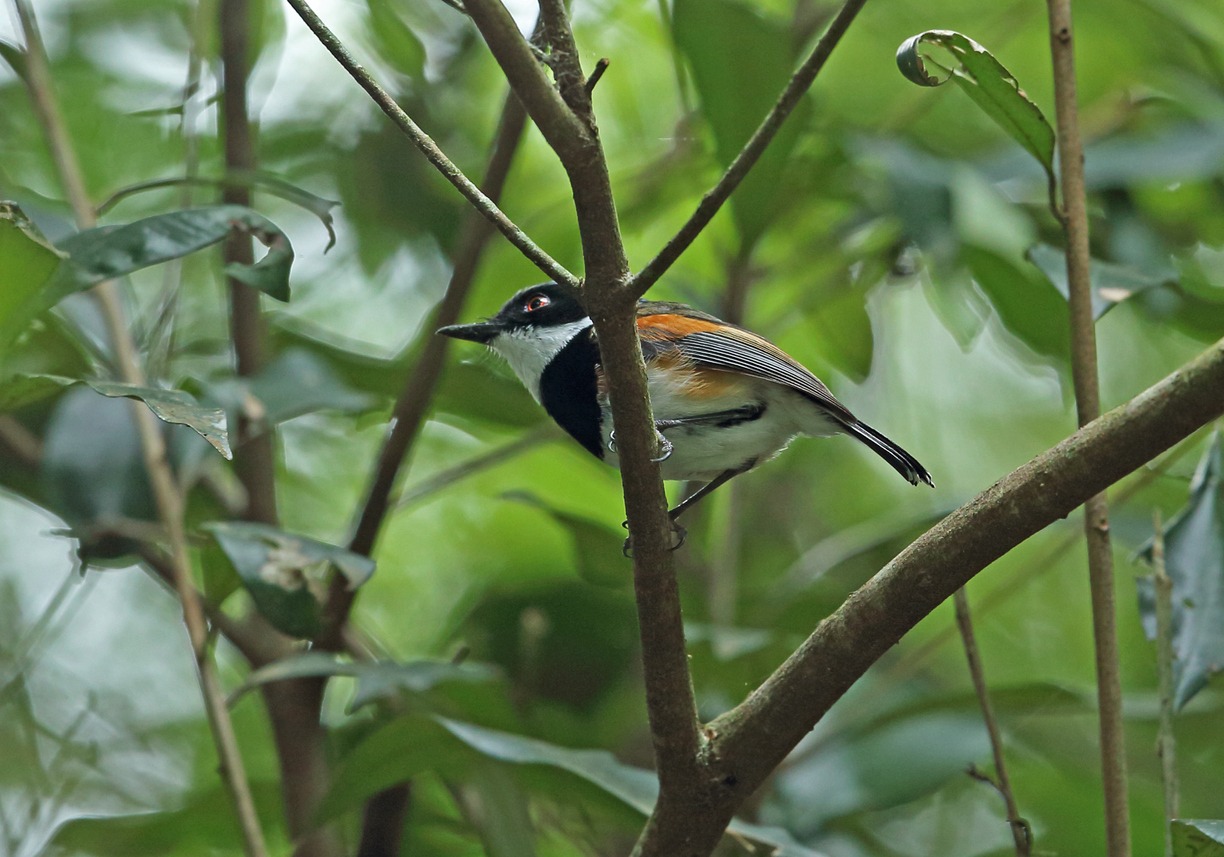The Cape Batis, also known as the Batis capensis or Cape Flycatcher, is a tiny, stout passerine bird that is categorized under the wattle-eye or Platysteiridae family. The family is a group of Wattle-eyes, Batises, and Shrike-flycatchers such as West African Batis, Pale Batis, West African Wattle-eye, Chestnut Wattle-eye, and Forest Batis.
This bird species is indigenous to the Afromontane forests found in southern Africa, making it one of the most widespread forest birds in the southern African region. It was first described in 1760 by Marthurin Jacques Brisson, a French zoologist and natural philosopher. Brisson included this passerine bird’s description in his book, the Ornithologie, based on the specimen found in Cape of Good Hope. In 1766, a Swedish naturalist named Carl Linnaeus updated 240 species, including the Cape Batis, that had been described by Brisson. Linnaeus gave it the name “capensis” to honor the Cape of Good Hope. Years later, the Cape Batis was categorized under the genus Batis that was introduced by German zoologist Friedrich Boie.
There are six subspecies of the Cape Batis:
- c. sola – found in northern Malawi
- c. dimorpha – located in central and southern Mozambique and Mount Namuli in the same country
- c. kennedyi – found in west and central Zimbabwe
- c. erythrophthalma – located in the Eastern Highlands in Zimbabwe and Mozambique
- c. hollidayi – found in South Africa and Mozambique
- c. capensis – found in Western Cape, Lesotho, and KwaZulu-Natal, South Africa
Since its population widely occurs in the African continent, the International Union for Conservation of Nature (IUCN) categorized this bird species as Least Concern.
Its seven levels of scientific classification are as follows:
Kingdom: Animalia
Phylum: Chordata
Class: Aves
Order: Passeriformes
Family: Platysteiridae
Genus: Batis
Species: B. capensis
The physical characteristics of a Cape Batis
An adult Cape Batis has bold, striking patterns. It can grow for up to 13 cm in length. Not much information has been recorded on its average weight.
This bird species is sexually dimorphic, meaning, they share several different physical characteristics. An adult male possesses a grey crown, black eye mask, yellow eyes, and a white throat. Its upperparts are brown, with a black rump, black tail, and rufous wings. Its underparts are pale white with a black breast band and rufous flanks. The legs are glossy black.
An adult female and a juvenile have a narrower breast band that is rufous in color, and there are small rufous patches on their throats. The eyes are reddish in color. These remarkable patterns are what distinguish them from other species.
Subspecies B. c. dimorpha and B. c. sola have cooler tones in the upper parts, flanks, and general plumage. They have shorter bills as well.
The distribution and habitat of Cape Batises
Cape Batises are commonly seen in southern African countries such as Swaziland, South Africa, Zimbabwe (Matobos and Eastern Highlands), Mozambique, Malawi, and Zambia.
It frequents a wide range of habitats like tropical forests, subtropical forests, moist lowlands, rural gardens, wooden gorges, mountain forests, and heavily degraded forests. Cape Batises can also be seen in zoos and safari areas.
The behavior of a Cape Batis
This cute, fluffy bird is known for its triple whistle song that sounds like cherra-warra-warra or foo-foo-foo. It also cries out a buzzing grate that sounds like ddrz-ddrzt-drrr.
This bird species is dubbed as summer breeders, copulating from September to April, and peaking between November and December. During the breeding season, both female and male Cape Batises exhibit territorial attitudes. Both will aggressively defend their territory from intruders, predators, and even humans. Both male and female Cape Batises will establish a nest in a tree or a bush. When large predator birds, humans, and other animals approach their territory, the Cape Batis will usually perch conspicuously near the intruder and sing loud cries to protest.
The diet of a Cape Batis
This bird species hunts by flycatching (catching insects while in flight) or catching prey from a ground. Cape Batis usually forage with a small group, with a pair, or alone. The Cape Batis’ diet mainly comprises insects, spiders, scorpions, millipedes, and small lizards. They also feed on grasshoppers, flies, beetles, mosquitoes, wasps, termites, and mantises.
BOTSWANA BIRDS | SOUTH AFRICA BIRDS
NAMIBIA BIRDS | ZAMBIA BIRDS | ZIMBABWE BIRDS

